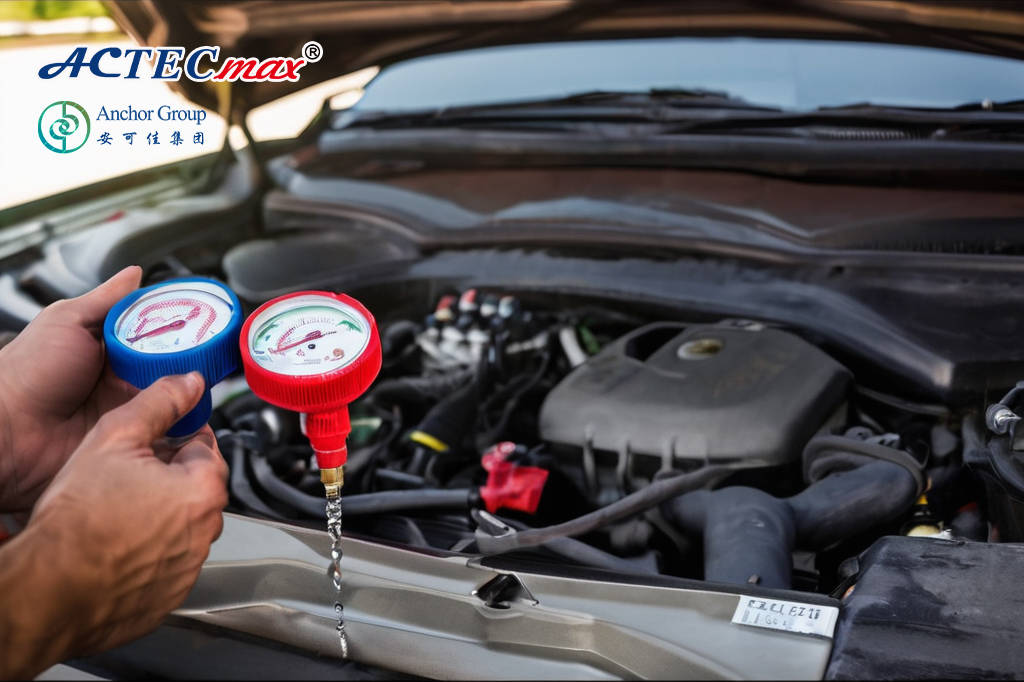
Como adicionar Freon ao carro: um guia passo a passo
Se você notou que o sistema de ar condicionado do seu carro não está resfriando tão eficazmente quanto antes, o problema pode ser que ele esteja com pouco refrigerante, comumente conhecido como Fréon. Com o tempo, o refrigerante no seu sistema de ar condicionado pode vazar, reduzindo sua eficiência e deixando você com um passeio quente e desconfortável.
Se você está se perguntando como adicionar freon ao carro, você veio ao lugar certo. Adicionar Freon (ou mais precisamente, refrigerante) ao sistema de A/C do seu carro é algo que muitos proprietários de carros podem fazer sozinhos com as ferramentas certas. Neste guia, nós o guiaremos pelas etapas para recarregar seu carro com segurança e eficiência. sistema de ar condicionado do carro.
Fréon é um termo comum usado para descrever refrigerantes usado em sistemas de ar condicionado, inclusive em carros. No entanto, Freon se refere especificamente ao antigo Refrigerante R12, que foi amplamente substituído por R134a na maioria dos veículos modernos.
Freon (ou R134a) é essencial para o funcionamento adequado do sistema de A/C do seu carro. Ele absorve o calor do ar dentro da cabine e o libera para fora, deixando o ar mais frio. Com o tempo, o refrigerante pode escapar do sistema devido a vazamentos ou desgaste natural, fazendo com que o ar condicionado perca seu poder de resfriamento.
Antes de começar a adicionar Freon ao A/C do seu carro, é importante determinar se você realmente precisa dele. Aqui estão alguns sinais comuns que indicam que o sistema de A/C do seu carro pode estar com pouco refrigerante:
Se você perceber algum desses sinais, pode ser hora de verificar e possivelmente adicionar refrigerante ao sistema de ar condicionado do seu carro.
Antes de começar, certifique-se de ter as ferramentas e materiais necessários:
Etapa 1: Verifique o sistema de A/C
Antes de adicionar refrigerante, verifique se há algum vazamento óbvio no sistema de A/C. Procure por pontos oleosos ao redor das mangueiras ou do compressor, pois vazamentos de refrigerante geralmente deixam resíduos oleosos. Se encontrar um vazamento, será necessário repará-lo antes de recarregar o sistema.
Etapa 2: Localize a porta de serviço de baixa pressão
Para adicionar refrigerante ao sistema de ar condicionado do seu carro, você precisará localizar o porta de serviço de baixa pressão. Esta é tipicamente uma porta menor localizada na maior das duas mangueiras de A/C (a outra é a porta de alta pressão). A porta de baixa pressão é onde você conectará a mangueira de refrigerante.
Etapa 3: conecte a mangueira de recarga à porta de serviço
Em seguida, conecte a mangueira de recarga do seu Kit de recarga de A/C para a porta de serviço de baixa pressão. Certifique-se de que a conexão esteja segura e que a mangueira não esteja vazando.
Etapa 4: Verifique o manômetro
Antes de adicionar refrigerante, verifique o manômetro no kit de recarga para obter uma leitura da pressão do sistema. O manômetro indicará se a pressão está muito baixa (o que significa que você precisa adicionar refrigerante) ou normal.
Etapa 5: Adicione o refrigerante
Depois que a mangueira estiver firmemente presa e o medidor mostrar baixa pressão, você pode começar a adicionar refrigerante. Siga estas etapas:
Etapa 6: Verifique a pressão novamente
Após adicionar o refrigerante, verifique o manômetro novamente. Ele deve estar dentro da faixa recomendada. Se ainda estiver baixo, você pode adicionar mais refrigerante, mas certifique-se de parar quando o manômetro atingir o nível adequado.
Etapa 7: Desconecte e teste o A/C
Depois que o refrigerante for adicionado, desconecte a mangueira da porta de serviço e feche a válvula na lata de refrigerante. Ligue o A/C e verifique se o ar agora está soprando mais frio. O sistema agora deve estar soprando ar mais frio, indicando que o refrigerante foi adicionado com sucesso.
Embora adicionar Freon ao seu carro seja um processo relativamente simples, há algumas situações em que você deve chamar um mecânico profissional:
Sabendo como adicionar freon ao carro é uma habilidade útil para mantendo o sistema de A/C do seu veículo, especialmente durante os meses de verão. Seguindo os passos deste guia, você pode recarregar os níveis de refrigerante do seu carro de forma rápida e segura, garantindo uma viagem confortável e fresca. Se você não tiver certeza sobre qualquer parte do processo ou se o sistema continuar a ter problemas, não hesite em procurar ajuda profissional para garantir que o sistema de A/C do seu carro esteja em ótimas condições de funcionamento.